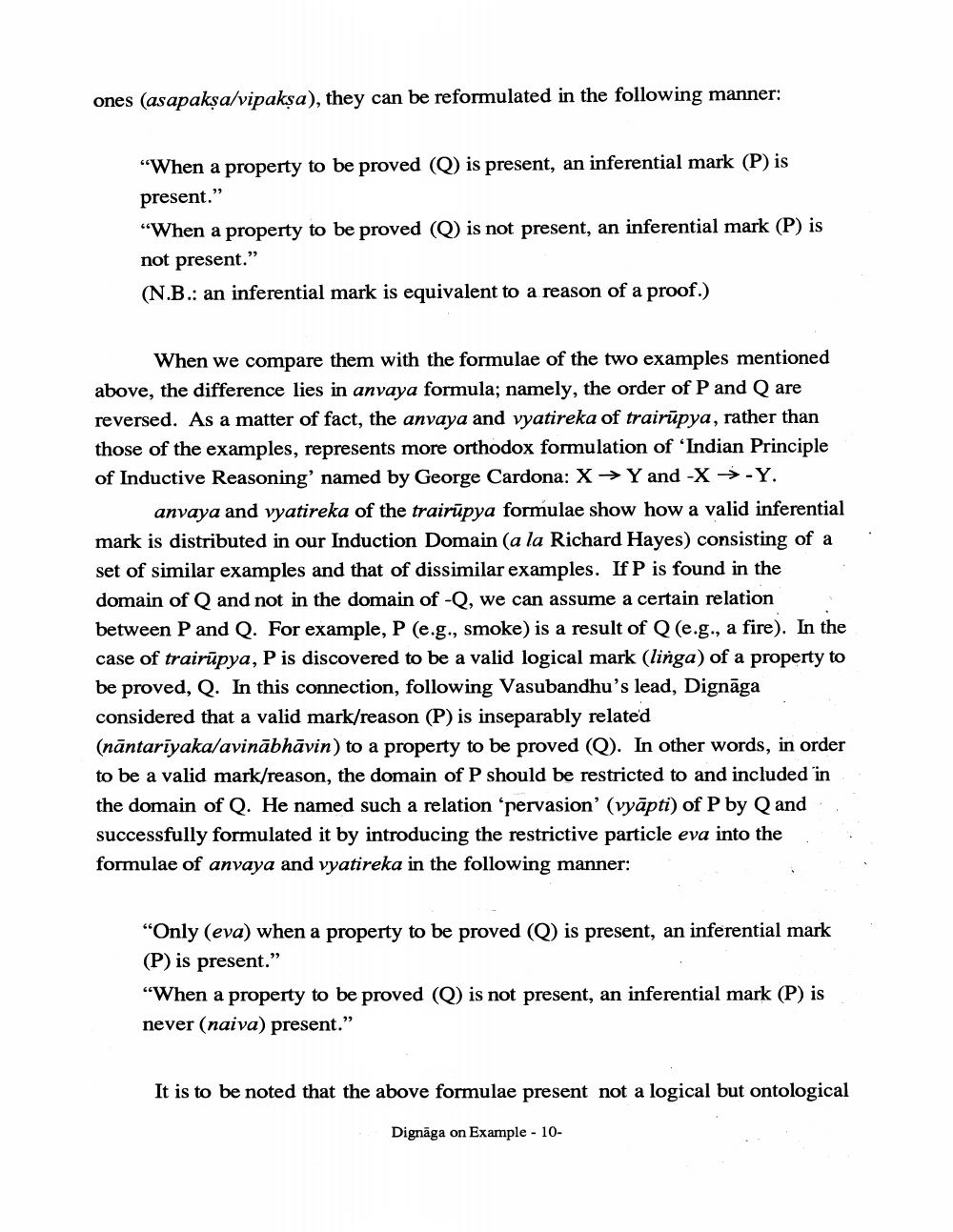________________
ones (asapakşa/vipaksa), they can be reformulated in the following manner:
“When a property to be proved (Q) is present, an inferential mark (P) is present."
“When a property to be proved (Q) is not present, an inferential mark (P) is not present.” (N.B.: an inferential mark is equivalent to a reason of a proof.)
When we compare them with the formulae of the two examples mentioned above, the difference lies in anvaya formula; namely, the order of P and Q are reversed. As a matter of fact, the anvaya and vyatireka of trairūpya, rather than those of the examples, represents more orthodox formulation of 'Indian Principle of Inductive Reasoning' named by George Cardona: X Y and -X -Y.
anvaya and vyatireka of the trairūpya formulae show how a valid inferential mark is distributed in our Induction Domain (a la Richard Hayes) consisting of a set of similar examples and that of dissimilar examples. If P is found in the domain of Q and not in the domain of -Q, we can assume a certain relation between P and Q. For example, P (e.g., smoke) is a result of Q (e.g., a fire). In the case of trairūpya, P is discovered to be a valid logical mark (linga) of a property to be proved, Q. In this connection, following Vasubandhu's lead, Dignāga considered that a valid mark/reason (P) is inseparably related (nāntarīyaka/avinābhāvin) to a property to be proved (Q). In other words, in order to be a valid mark/reason, the domain of P should be restricted to and included in the domain of Q. He named such a relation 'pervasion' (vyāpti) of P by Q and successfully formulated it by introducing the restrictive particle eva into the formulae of anvaya and vyatireka in the following manner:
“Only (eva) when a property to be proved (Q) is present, an inferential mark (P) is present.” “When a property to be proved (Q) is not present, an inferential mark (P) is never (naiva) present."
It is to be noted that the above formulae present not a logical but ontological
Dignāga on Example - 10




